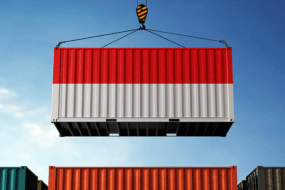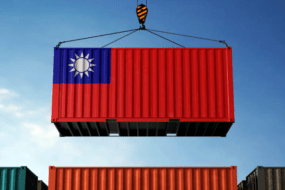- Home
- Trade News
- Asia: top destination for garm ...

What is the garment industry all about?
The garment industry is a major contributor to the global economy. It is estimated that the industry generates about US$1.5 to 2 trillion in annual revenue. The industry is also a major driver of economic growth in many developing countries and plays a vital role in the global trade of goods. It is a major export industry for many nations, and its products are sold all over the world. The industry provides a major source of foreign currency for many nations.
In addition to its economic contribution, the garment industry also has a substantial role in social and cultural terms. Clothing is a vital part of people’s lives, and the industry plays a major role in shaping fashion trends. The garment industry is responsible for creating and popularizing many of the fashion trends that we see today. The industry also helps to preserve traditional crafts and skills.
The garment industry is employs a significant number of women. In many developing countries, women make up the majority of the workforce in the garment industry. This provides them with much-needed employment and an opportunity to earn a livelihood. The garment industry also provides livelihoods for millions of people around the world. In addition to employment, the industry also generates foreign exchange earnings and tax revenue.
Asia is still the preeminent location for the manufacture of clothing across the globe, in spite of recent changes in the business.

Since the early 2000s, Asia’s proportion of global textile and apparel exports has increased dramatically, reaching a record of 58% in 2015 before falling to roughly 55% in 2019.
These trends were primarily caused by China, which up until 2015 experienced continuous export growth in both subsectors. After that, its declining share of exports of wearing apparel was only partially offset by an increase in the share of other Asian clothing exporters, specifically Vietnam, Bangladesh, Myanmar, and Cambodia.
Europe was largely responsible for absorbing the three percent drop in Asia’s market share since 2015, with all other regions’ export shares either stable or declining.
This may indicate that nearshoring has occurred throughout these years rather than migration to less expensive locations. China’s supremacy remains unrivalled despite the recent drop, accounting for 34% of worldwide GTF exports in 2019, followed by Vietnam (5%), Bangladesh (4.3%), and India (4.3%).
What are the top countries for garment manufacturers?

There are many Asian countries that are known for their garment manufacturing, but China, Vietnam, Bangladesh, and India are the top four. These countries have a long history of producing high-quality clothing, and they continue to lead the way in terms of output and exports. This is due to a combination of factors, including low labour costs, a large pool of skilled workers, and favourable government policies. In China, for example, the government has invested heavily in the textile and apparel industry, and has created incentives for companies to set up manufacturing operations there. As a result, China has become the world’s leading producer of garments, accounting for nearly a third of all global production.
Low labour costs are one of the most critical factors, as they allow garment manufacturers to produce clothing at a lower cost than in other countries. This makes it possible for garment manufacturers in these countries to produce clothing at a fraction of the cost of their counterparts in developed countries.
Another important factor is the availability of skilled labour. In China, Vietnam, Bangladesh, and India, there is a large pool of workers with the skills and training necessary to work in the garment industry.
The garment industry, which is often considered to be one of Asia’s most important sectors, plays a key part in the economic development of the continent.

The garment, textile, and footwear sector has been a significant contributor to the growth of a number of Asian nations in recent decades. Nevertheless, the growth of the sector in many countries has shown itself in a variety of distinct ways.
In recent years, there has been a shift in the manufacturing industry in countries such as China, Thailand, and the Philippines away from labour-intensive production and toward sectors with medium to high levels of technological intensity. This shift has resulted in a reduced relative role for automation.
In addition to this, the importance of the sector has grown in other countries’ economy, such as Bangladesh and Cambodia. Statistics from the most recent few years reveal that the sector contributed for between 28% and 30% of the value added to manufacturing in Cambodia, Bangladesh, Pakistan, Sri Lanka, and Vietnam (MVA).
These countries’ exports of commodities also owed a significant amount to the sector; in fact, it was responsible for 91% of the exports in Bangladesh, 66% in Cambodia, 58% in Pakistan, 45% in Sri Lanka, and 22% in Vietnam.
In the most recent year for which data is available, there were an estimated 22–23 million people working in the industry in China, and there were an estimated 14–15 million people working in the industry in India. This brings the total number of people employed in the industry in the region to over 60 million people.
It is anticipated that the sector will provide work for over five million people in Bangladesh, Pakistan, and Vietnam between 2017 and 2019; in 2015, it provided employment for more than four million people in Indonesia.
Even in Myanmar, a new participant in the arena of Asian garment exporters, with 1.2 million GTF workers in 2019, there are millions of people engaged in allied sectors such as packing, shipping, and logistics.
The GTF industry was the largest employment in the manufacturing sector in a number of nations in the region, including Cambodia (72%), Bangladesh (55%), Myanmar (51%), Pakistan (48%), Vietnam (42%), Sri Lanka (39%), and India (32%). Even in countries like Indonesia, the Philippines, and Thailand, which have more diverse manufacturing bases, garment making still accounts for a considerable share of the manufacturing employment (27%, 17%, and 16% of the workforce, respectively).
Use TradeData.Pro to find garment manufacturers for your business.
With our global trade data platform, finding suppliers to import products is simpler than ever. TradeData.Pro allows you to communicate with companies anywhere in the world at any time. Get in touch with businesses, compile lists of potential export partners, monitor the movements of rival firms’ goods, and do much more with the information you find at our hub.
Learn who to contact for supplies.
In a matter of minutes, you may search for current trading organisations by geography, trade information, business partners, and a plethora of other filterable choices all from the comfort of our dashboard after compiling a qualified list of possible suppliers from across the world.
Be aware of your suppliers’ operations.
A new client for your supplier may make it impossible for you to regain their services, forcing you to seek for other providers. There may be room for bargaining on pricing if your supplier has any extra capacity. Keep track of your supplier’s every business move to ensure you’re never caught off guard.
To find out more about accessing a new market, you can check out this article which shows you how to use TradeData.Pro to access Global Trade Markets: https://blog.tradedata.pro/say-hello-to-our-new-release-of-tradedata-pro/
The most trustable and reliable source for Trade Data.
TradeData.Pro is proudly made in Singapore. Singapore has been one of the world’s most politically stable countries, with an open and trade-driven economy. TradeData.Pro is presented by CIC, a government-linked company in Singapore CIC is a Join Venture of Zall Smartcom, SGX and GeTS.)
Since the launch of TradeData.Pro in 2018, TradeData.Pro has received overwhelmingly positive remarks from the market. This is because TradeData.Pro has wide coverage, low cost, and fast response. There are many leading companies from different industries that have subscribed to TradeData.Pro.
TradeData.Pro was awarded Singapore Quality Class in 2020 and Stevie Award Gold in 2021. Businesses need the information to reveal trends, identify market opportunities, track competitors buyers and suppliers, and better understand supply chain potential.
Finding these critical data has traditionally been challenging. But this information do exist, but as part of government import and export filing requirement. The detailed shipment information which are within these filings constructions the core of global trade.
TradeData.Pro has gathered and packaged this information as business intelligence. Our solution helps companies understand the flow of goods across borders and features the world’s largest searchable trade database. We do the heavy lifting for you by reviewing, standardising, and cleaning data, then delivering in an intuitive format.
Turkey has been the hottest industry lately, to stay updated on Turkey, you can view all this information on Turkey here on our platform: https://tradedata.pro/asia-trade-data/turkey-import-export-data
Find the exact product you are interested in here at https://tradedata.pro/trade-database-demo/
Learn how TradeData.Pro works by watching the video below! View here on Youtube as well: https://youtu.be/QQ9wG-CesI8
Business Economy Export Global Import International Trade Markets Opportunities Prices Supplier Trade Data Pro Turkey Worldwide
Recent Posts
Archives
- June 2025
- May 2025
- April 2025
- March 2025
- February 2025
- January 2025
- December 2024
- November 2024
- April 2024
- March 2024
- January 2024
- December 2023
- November 2023
- October 2023
- September 2023
- August 2023
- July 2023
- June 2023
- May 2023
- April 2023
- March 2023
- February 2023
- January 2023
- December 2022
- November 2022
- October 2022
- September 2022
- August 2022
- July 2022
- June 2022
- May 2022
- April 2022
- March 2022
- February 2022
- January 2021
Categories
Recent Post
Indonesia Exports: Sunny Outlook Despite Coal, US
- June 30, 2025
- 9 min read
Taiwan Exports: Hitting Record Highs in Challenging
- June 30, 2025
- 7 min read
Forecasting a Brighter Outlook for Chile Imports
- May 30, 2025
- 8 min read
All Tags
Agriculture Automotive Brazil Business Business Opportunities Buyers China Coffee Commodities Crops Ecommerce Economic Economy Electronics Energy Environmental Europe Export Exports Future Garments Global Import India Industries International Trade Leads Leads Generation manufacturing Markets Opportunities Pharmaceuticals Prices Rice Russia Supplier Textiles Trade Trade Data Trade Data Pro Turkey Ukraine United States Vietnam Worldwide








